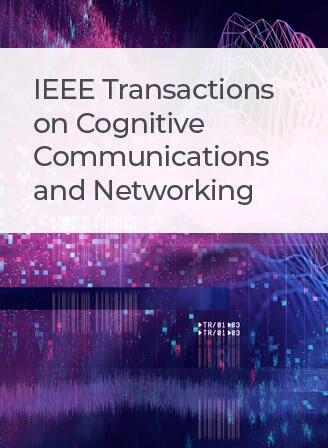在共生通信辅助应急无人机系统中进行编码缓存以实现可靠的地图传播
IF 7
1区 计算机科学
Q1 TELECOMMUNICATIONS
IEEE Transactions on Cognitive Communications and Networking
Pub Date : 2024-08-26
DOI:10.1109/TCCN.2024.3449649
引用次数: 0
摘要
许多救援任务严重依赖于有效的感知和实时决策,而这取决于高效的数据收集和传播。本研究介绍了一种利用共生通信的分层编码缓存框架,使反向散射设备(BD)能够传递信息。通过在装有反向散射装置的无人飞行器(UAV)上有策略地缓存编码地图片段,可以促进协作上传,从而提高传播的可靠性。我们得出了共生和主动通信模式的精确成功传输概率。建立了可靠传输与有效覆盖之间的耦合关系,并推导出一个联合概率模型,用于评估灾害地图的有效恢复区域。为了最大限度地扩大有效覆盖范围,提出了一种基于深度强化学习(DRL)的多代理动态决策算法,优化了感知无人机的选择、带宽资源的分配和编码缓存参数的调整,以适应地图的实时更新。仿真结果验证了所提方案显著改善了灾害地图的有效恢复区域。本文章由计算机程序翻译,如有差异,请以英文原文为准。
Coded Caching for Reliable Map Dissemination in Symbiotic Communication Aided Emergency UAV Systems
Many rescue missions critically rely on effective perception and real-time decision making, which hinge on efficient data collection and dissemination. This study introduces a hierarchical coded caching framework leveraging symbiotic communication, enabling backscatter devices (BDs) to relay information. By strategically caching coded map fragments across unmanned aerial vehicles (UAVs) equipped with BDs, collaborative uploading is fostered to enhance dissemination reliability. We derive the precise successful transmission probabilities for both symbiotic and active communication modes. A coupling relationship between reliable transmission and effective coverage is established, and a joint probability model is deduced to evaluate the effective recovery area of disaster maps. To maximize effective coverage, a deep reinforcement learning (DRL)-based multi-agent dynamic decision algorithm is proposed, optimizing the selection of sensing UAVs, allocation of bandwidth resources, and adjustment of coded caching parameters to accommodate real-time map updates. Simulation results validate the significant improvement in the effective recovery area of disaster maps achieved by the proposed scheme.
求助全文
通过发布文献求助,成功后即可免费获取论文全文。
去求助
来源期刊

IEEE Transactions on Cognitive Communications and Networking
Computer Science-Artificial Intelligence
CiteScore
15.50
自引率
7.00%
发文量
108
期刊介绍:
The IEEE Transactions on Cognitive Communications and Networking (TCCN) aims to publish high-quality manuscripts that push the boundaries of cognitive communications and networking research. Cognitive, in this context, refers to the application of perception, learning, reasoning, memory, and adaptive approaches in communication system design. The transactions welcome submissions that explore various aspects of cognitive communications and networks, focusing on innovative and holistic approaches to complex system design. Key topics covered include architecture, protocols, cross-layer design, and cognition cycle design for cognitive networks. Additionally, research on machine learning, artificial intelligence, end-to-end and distributed intelligence, software-defined networking, cognitive radios, spectrum sharing, and security and privacy issues in cognitive networks are of interest. The publication also encourages papers addressing novel services and applications enabled by these cognitive concepts.
 求助内容:
求助内容: 应助结果提醒方式:
应助结果提醒方式:


